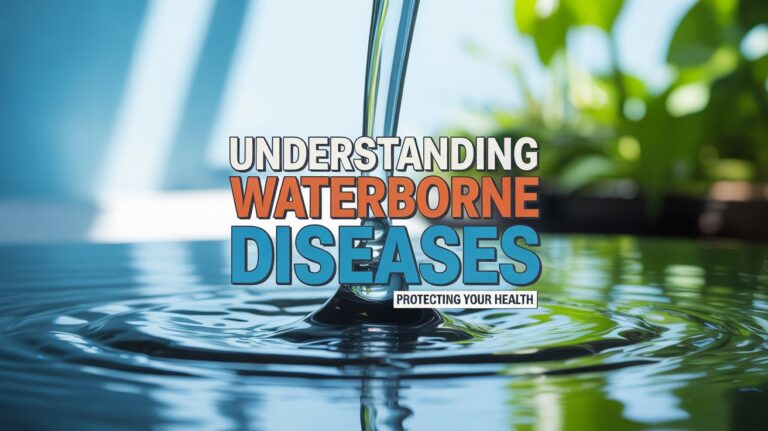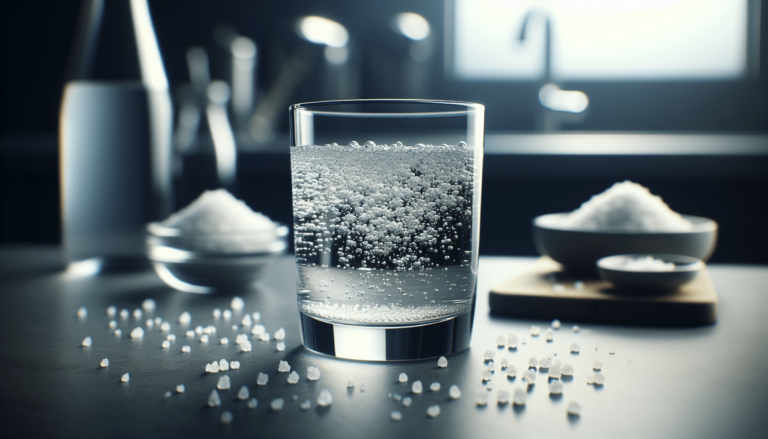5 Reasons Your Water Has a Bad Taste or Smell
Have you ever turned on the faucet, only to be hit with a foul odor or unpleasant taste from the water? It’s a common issue that can be both frustrating and concerning.
Is your drinking water safe? The presence of sewage, sulfur, or other contaminants can significantly impact the quality of your water, making it unpalatable or even hazardous to your health.
In this article, we’ll explore the common causes of bad-tasting or smelling water, including musty smells, metallic tastes, and the role of chlorine in water treatment.
Key Takeaways
- Common causes of bad-tasting or smelling water
- The impact of sewage and sulfur on water quality
- Solutions to address water quality issues
- The importance of chlorine in water treatment
- Tips for improving the taste and smell of your drinking water
The Importance of Clean, Fresh-Tasting Water
Clean drinking water is essential for our daily lives, and its quality can significantly impact our health and wellbeing. Ensuring that our water is free from contaminants and odors is crucial for maintaining good health.
How Water Quality Affects Daily Life
Water quality can affect various aspects of our daily routine. For instance, water with unpleasant tastes or odors can make drinking it unappealing, potentially leading to dehydration. Moreover, contaminated water can cause health issues, ranging from mild gastrointestinal problems to serious infections.
Improving water quality can significantly enhance our daily lives. By addressing water taste problems and unpleasant water smell reasons, we can ensure a healthier lifestyle.
Common Signs Your Water Isn’t Right
Identifying issues with our water quality can be straightforward. Common signs include unusual tastes, such as metallic or bitter flavors, and unpleasant odors, like the smell of chlorine or sulfur. These issues can be indicative of underlying problems, such as water odor causes that need to be addressed.
By recognizing these signs and taking steps towards improving water quality, we can enjoy fresh-tasting water that is safe to drink.
Chlorine: The Swimming Pool Effect
Municipal water systems rely on chlorine to kill bacteria and other pathogens, but this can result in an unpleasant taste and odor. Chlorine disinfection is a widely accepted practice due to its effectiveness in preventing waterborne diseases.
Why Municipal Water Systems Use Chlorine
Chlorine is used because it is a powerful disinfectant that can eliminate a broad spectrum of pathogens. Its use has been instrumental in reducing the incidence of waterborne illnesses.
Identifying Chlorine Taste and Smell
The taste and smell of chlorine in water are often described as sharp, pungent, or reminiscent of bleach. Some people may notice a distinct “swimming pool” smell, which is a clear indicator of chlorine presence.
Simple Solutions to Reduce Chlorine
There are several straightforward methods to reduce chlorine taste and odor in drinking water:
- Letting water sit before drinking
- Using activated carbon filters
Letting Water Sit Before Drinking
Allowing water to sit for a period can help dissipate chlorine. Simply fill a container and let it stand for 30 minutes to an hour before consumption.
Using Activated Carbon Filters
Activated carbon filters are highly effective at removing chlorine and its byproducts. These filters can be installed at the point-of-use or integrated into a whole-house filtration system.
By implementing these simple solutions, you can significantly improve the taste and odor of your drinking water.
Sulfur: The Rotten Egg Problem
The notorious ‘rotten egg’ smell in your water is often a sign of sulfur contamination. This issue can be both unpleasant and concerning for homeowners. Understanding the cause and finding an effective solution is crucial for enjoying clean, fresh-tasting water.
What Causes That Distinctive Sulfur Smell
The sulfur smell in water is typically caused by the presence of hydrogen sulfide gas or sulfur bacteria. Hydrogen sulfide is a naturally occurring gas that can be produced by the breakdown of organic matter in the absence of oxygen. It’s known for its characteristic rotten egg odor.
Hydrogen Sulfide vs. Sulfur Bacteria
While both hydrogen sulfide and sulfur bacteria can cause a sulfur smell, they require different treatment approaches. Hydrogen sulfide is a gas that can be dissolved in water, whereas sulfur bacteria are living organisms that can produce sulfur compounds as byproducts.
Effective Treatment Options
Fortunately, there are several effective treatment options available for addressing sulfur smells in water.
Shock Chlorination
One common method is shock chlorination, which involves adding a high dose of chlorine to the water system to oxidize the sulfur compounds and kill bacteria.
Aeration Systems
Aeration systems work by introducing air into the water, which helps to oxidize and remove hydrogen sulfide gas.
Specialized Filtration
For more persistent issues, specialized filtration systems can be used. These systems are designed to remove sulfur compounds and bacteria from the water.
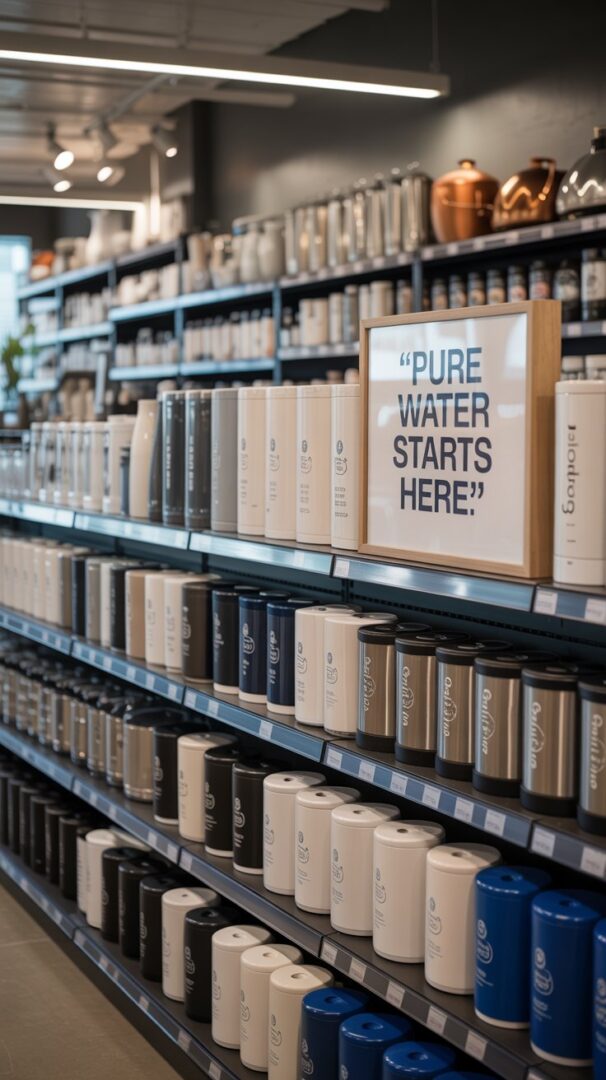
| Treatment Method | Effectiveness Against Sulfur Smell | Maintenance Requirements |
|---|---|---|
| Shock Chlorination | High | Regular chlorination checks |
| Aeration Systems | Medium to High | Periodic cleaning of aeration components |
| Specialized Filtration | High | Regular filter replacements |
By understanding the cause of the sulfur smell and selecting the appropriate treatment option, homeowners can enjoy fresh, clean-tasting water without the nuisance of a rotten egg odor.
Metallic Tastes: Iron, Copper, and Zinc
A metallic taste in your water can be unpleasant and is often caused by the presence of metals like iron, copper, or zinc. This issue not only affects the taste but can also indicate potential health and plumbing concerns.
Recognizing Different Metal Flavors
Different metals impart distinct flavors to water. Iron often gives water a rusty or metallic taste, while copper can cause a bitter or tangy flavor. Zinc, though less common, can also contribute to a metallic taste. Recognizing these differences is crucial for identifying the source of the problem.
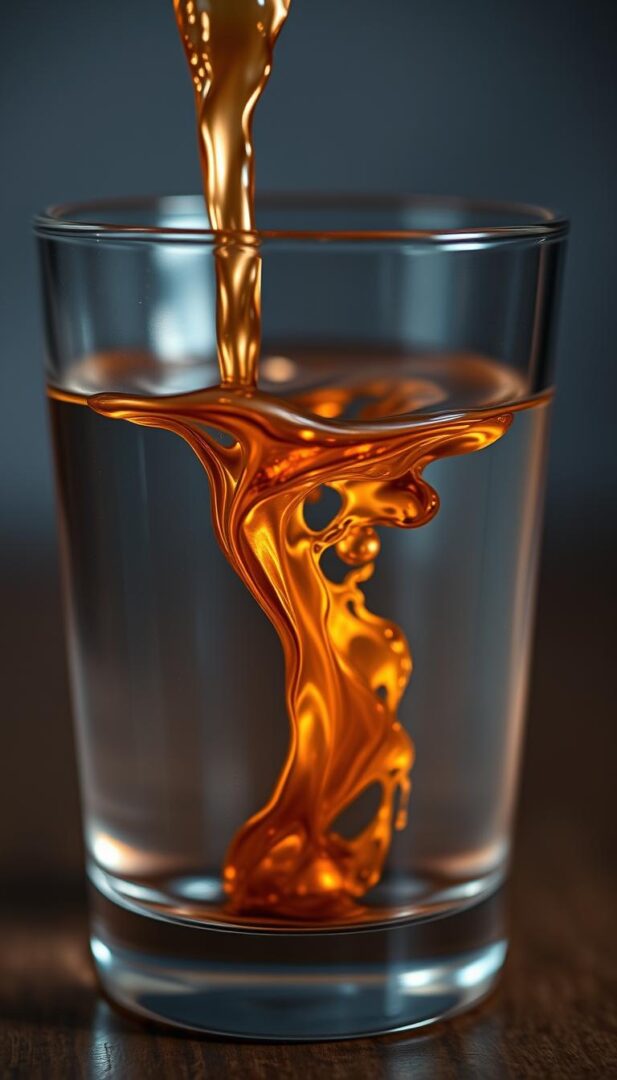
Common Sources in Plumbing and Groundwater
Metallic tastes in water usually stem from corrosion in plumbing systems or contamination in groundwater. Old pipes, especially those made from or containing metals like iron, copper, or zinc, can leach these metals into the water supply. Groundwater can also be contaminated by natural sources or industrial runoff.
Solutions for Metal-Free Water
Addressing metallic tastes requires identifying and treating the source. Several solutions are available:
Water Softeners
Water softeners can reduce the concentration of certain metals by removing calcium and magnesium, which contribute to water hardness. While not directly removing metals like iron or copper, they can help reduce the overall mineral content.
Reverse Osmosis Systems
Reverse osmosis systems are highly effective in removing a wide range of contaminants, including metals. These systems force water through a semi-permeable membrane, filtering out impurities.
Sequestration Methods
Sequestration involves treating water to prevent metals from reacting or precipitating out. This method doesn’t remove the metals but alters their properties to prevent unwanted tastes or odors.
By understanding the cause of metallic tastes and applying the appropriate solution, homeowners can enjoy cleaner, better-tasting water. Whether through water softeners, reverse osmosis, or sequestration, there are effective ways to address this issue.
5 Reasons Your Water Has a Bad Taste or Smell: Bacterial Growth
Bacterial growth in your water supply can lead to unpleasant tastes and odors, making it undrinkable. This issue is a significant concern for households relying on well water or municipal supplies that may be contaminated.
Signs Your Water May Be Contaminated
Contaminated water often exhibits visible signs such as cloudiness, sediment, or an unusual color. Moreover, an offensive odor or unpleasant taste can be a clear indicator of bacterial contamination.
Types of Bacteria That Affect Taste and Odor
Several types of bacteria can affect the taste and odor of water. Coliform bacteria are commonly used as indicators of water quality. Other bacteria like Sulfur bacteria can produce compounds that give water a bad smell.
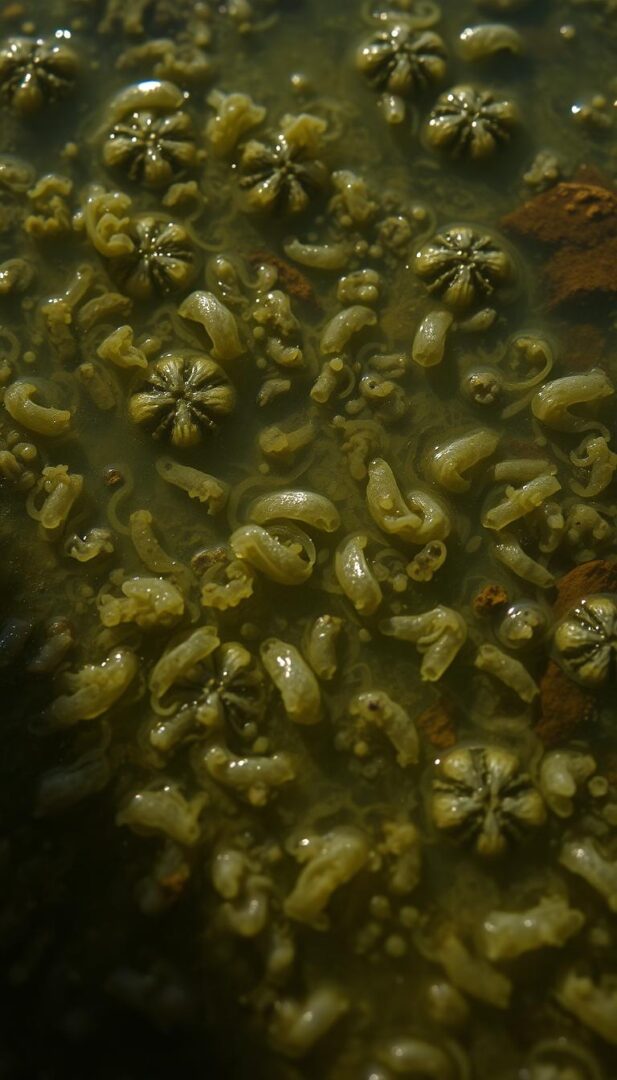
Disinfection and Treatment Methods
Fortunately, there are effective methods to disinfect and treat bacterial contamination in water.
UV Purification
UV purification involves exposing water to ultraviolet light, which kills bacteria and other microorganisms. This method is chemical-free and effective against a wide range of pathogens.
Chlorination
Chlorination is a traditional method that involves adding chlorine to water to kill bacteria. While effective, it can leave a residual taste or smell.
Ozonation
Ozonation uses ozone gas to disinfect water. It is a powerful oxidant that can eliminate bacteria, viruses, and other contaminants, leaving no harmful residues.
By understanding the signs of contamination and applying appropriate disinfection and treatment methods, you can ensure your water is safe and pleasant to drink.
Chemical Contaminants: Industrial and Agricultural Runoff
The presence of chemical contaminants in water supplies, often resulting from industrial and agricultural activities, is a growing concern. These contaminants can significantly alter the taste and smell of water, making it unpalatable and potentially harmful.
Identifying Chemical Tastes and Smells
Chemical contaminants can impart a variety of unpleasant tastes and odors to water. For instance, industrial runoff might introduce heavy metals or solvents, while agricultural runoff can lead to the presence of pesticides and fertilizers. Identifying the specific cause is crucial for effective treatment.
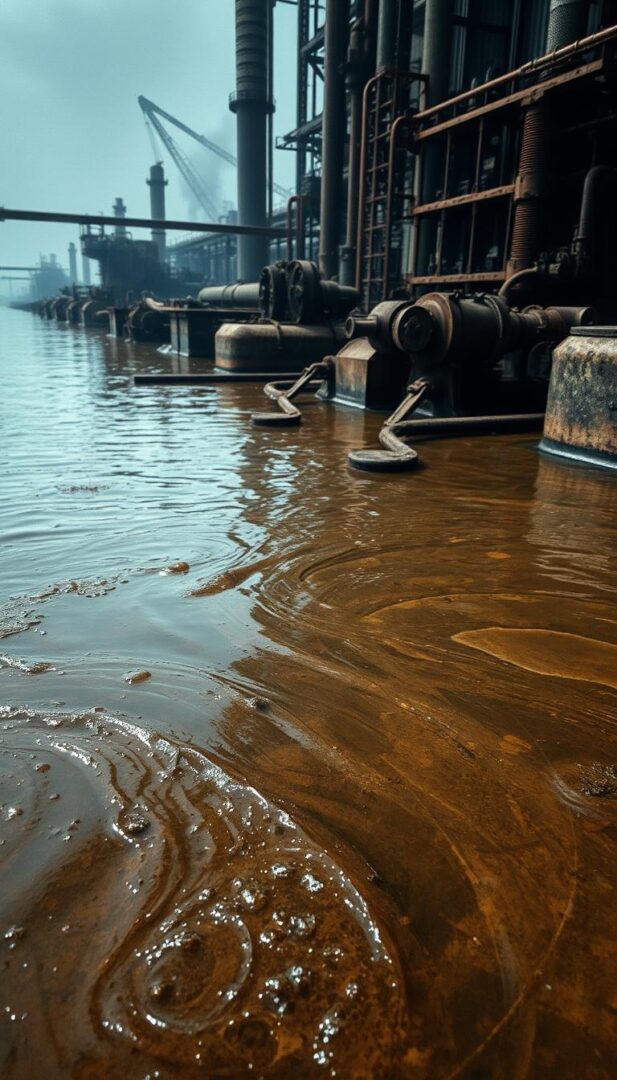
Common Contaminants in American Water Supplies
Some of the most common chemical contaminants in American water supplies include nitrates from fertilizers, pesticides like atrazine, and industrial chemicals such as solvents and heavy metals. These substances can enter water sources through various pathways, including runoff and improper disposal.
Advanced Filtration Solutions
To address chemical contaminants, advanced filtration solutions are necessary. These include:
Activated Carbon
Activated carbon filters are effective at removing many organic compounds, including some pesticides and industrial chemicals. They work by adsorbing these contaminants onto the carbon surface.
Reverse Osmosis
Reverse osmosis systems force water through a semi-permeable membrane, removing a wide range of contaminants, including dissolved solids and heavy metals. This method is highly effective but can be wasteful if not properly managed.
Multi-Stage Systems
Multi-stage filtration systems combine various technologies, such as activated carbon, reverse osmosis, and UV treatment, to provide comprehensive protection against chemical contaminants. These systems offer a robust solution for households concerned about water quality.
As stated by the Environmental Protection Agency (EPA), “The safe and reliable drinking water is crucial for public health.” Therefore, understanding and addressing chemical contaminants is essential for ensuring safe drinking water.
“The safe and reliable drinking water is crucial for public health.” – Environmental Protection Agency (EPA)
Testing Your Water Quality: DIY and Professional Options
Testing your water quality is a vital step in identifying potential issues that could affect its taste, smell, or safety. With various contaminants potentially present in your water supply, understanding the quality of your water is crucial for ensuring it’s safe and pleasant to drink.
Home Testing Kits: What They Can and Can’t Tell You
Home testing kits are a convenient and cost-effective way to get an initial assessment of your water quality. These kits usually test for common contaminants such as lead, chlorine, and certain bacteria. However, they may not provide a comprehensive analysis, as they can be limited in the range of contaminants they can detect.
Benefits of home testing kits include ease of use and quick results. Nonetheless, if you suspect significant contamination or if you’re unsure about the results, it’s advisable to seek further testing.
When to Invest in Professional Analysis
If your home testing kit indicates potential issues or if you’re experiencing persistent problems with your water’s taste or odor, it’s time to invest in professional analysis. Professional water testing can provide a detailed breakdown of your water’s chemical and biological composition, identifying contaminants that home kits might miss.
Professional analysis is particularly recommended if you have a well or are concerned about specific contaminants such as nitrates, fluoride, or heavy metals.
Understanding Your Water Test Results
Once you’ve received your water test results, understanding what they mean is crucial. The results will typically indicate the levels of various contaminants and compare them against safety standards. If contaminants are present above recommended levels, you’ll need to consider appropriate treatment options.
Consulting with a water quality expert can help you interpret the results and recommend the best course of action to improve your water quality.
Comprehensive Water Filtration Solutions
Comprehensive water filtration systems are the key to improving the taste and quality of your water. With various technologies available, selecting the right system can be daunting. This section will explore different filtration technologies, compare whole-house and point-of-use systems, and analyze the costs and benefits of popular options.
Comparing Different Filtration Technologies
Water filtration technologies vary widely, including activated carbon, reverse osmosis, and ultraviolet (UV) light disinfection. Activated carbon filters are effective at removing chlorine and improving taste, while reverse osmosis systems can remove a wide range of contaminants, including dissolved solids.
UV light disinfection is another technology that kills bacteria and viruses, providing an additional layer of protection. Understanding the strengths of each technology is crucial in selecting the most appropriate system for your needs.
Whole-House vs. Point-of-Use Systems
When deciding on a water filtration system, one must consider whether a whole-house or point-of-use system is more suitable. Whole-house systems filter all the water in your home, providing comprehensive protection. In contrast, point-of-use systems are installed at a single tap, offering filtered water for drinking and cooking.
Cost-Benefit Analysis of Popular Options
Different filtration systems come with varying costs and benefits. Here’s a comparison of popular options:
| Filtration System | Initial Cost | Maintenance Cost | Effectiveness |
|---|---|---|---|
| Pitcher Filters | $20-$50 | $5-$10/month | Basic filtration, improves taste |
| Under-Sink Systems | $100-$300 | $20-$50/year | Effective against many contaminants |
| Whole-House Filtration | $500-$2,000 | $50-$100/year | Comprehensive protection for all water uses |
Pitcher Filters
Pitcher filters are a simple and affordable option for improving water taste and quality. They are easy to use and maintain but may not be as effective against certain contaminants.
Under-Sink Systems
Under-sink filtration systems offer a more robust solution, capable of removing a wider range of contaminants. They require more installation effort but provide better water quality.
Whole-House Filtration
Whole-house filtration systems provide the most comprehensive protection, filtering all the water in your home. While they are more expensive to install and maintain, they offer peace of mind and overall water quality improvement.
When to Call a Water Treatment Professional
While some water quality issues can be resolved with DIY solutions, others require the expertise of a water treatment professional. It’s essential to recognize when your situation demands specialized attention.
Warning Signs That Require Expert Attention
Certain signs indicate that your water problems are beyond simple fixes. These include persistent bad taste or smell, visible contaminants, or health concerns related to water consumption. If you’ve noticed any of these issues, it’s time to seek professional help.
Questions to Ask When Hiring a Specialist
When selecting a water treatment specialist, ask about their experience with similar issues, the technologies they use, and their approach to solving your specific problem. Ensure they are certified and have positive customer reviews.
What to Expect from Professional Treatment
A professional will typically start with a thorough assessment of your water quality, followed by recommendations for appropriate treatment solutions. They will then install and maintain the necessary systems to ensure your water is safe and pleasant to drink.
Preventing Future Water Taste and Odor Problems
Regular checks and maintenance can significantly reduce water quality issues. By being proactive, you can ensure your water remains fresh and clean.
Regular Maintenance Schedules
Establishing a regular maintenance schedule is vital. This includes checking your water filtration systems, inspecting pipes for damage, and ensuring all components are functioning correctly.
Monitoring Changes in Water Quality
Keep an eye on changes in your water’s taste, odor, and appearance. Sudden changes can indicate a problem that needs addressing.
Addressing Issues Before They Worsen
If you notice any issues, don’t hesitate to address them. Early intervention can prevent minor problems from becoming major issues.
| Maintenance Task | Frequency | Benefit |
|---|---|---|
| Check Filtration Systems | Monthly | Ensures clean drinking water |
| Inspect Pipes | Quarterly | Prevents leaks and contamination |
| Test Water Quality | Bi-Annually | Identifies potential issues early |
By following these tips and maintaining a proactive approach, you can significantly reduce the risk of water taste and odor problems.
Conclusion
Understanding the reasons behind bad-tasting or smelling water is crucial for maintaining good water quality. The 5 key reasons discussed in this article – chlorine, sulfur, metallic tastes, bacterial growth, and chemical contaminants – can significantly impact the taste and odor of your water.
By identifying the causes of unpleasant water smells and tastes, you can take the necessary steps to address these issues. Regular maintenance schedules, monitoring changes in water quality, and addressing problems before they worsen are essential water quality tips to keep your water fresh and clean.
In conclusion, being aware of the factors that affect your water’s taste and smell is vital. By applying the knowledge gained from this article, you can enjoy clean, fresh-tasting water and maintain a healthy household. For more information on improving your water quality, consider consulting with a water treatment professional to determine the best solution for your specific needs.





